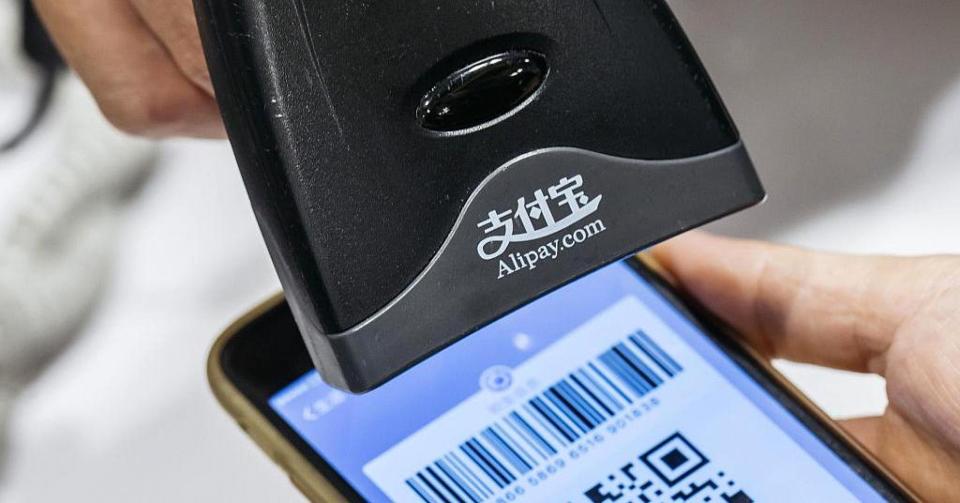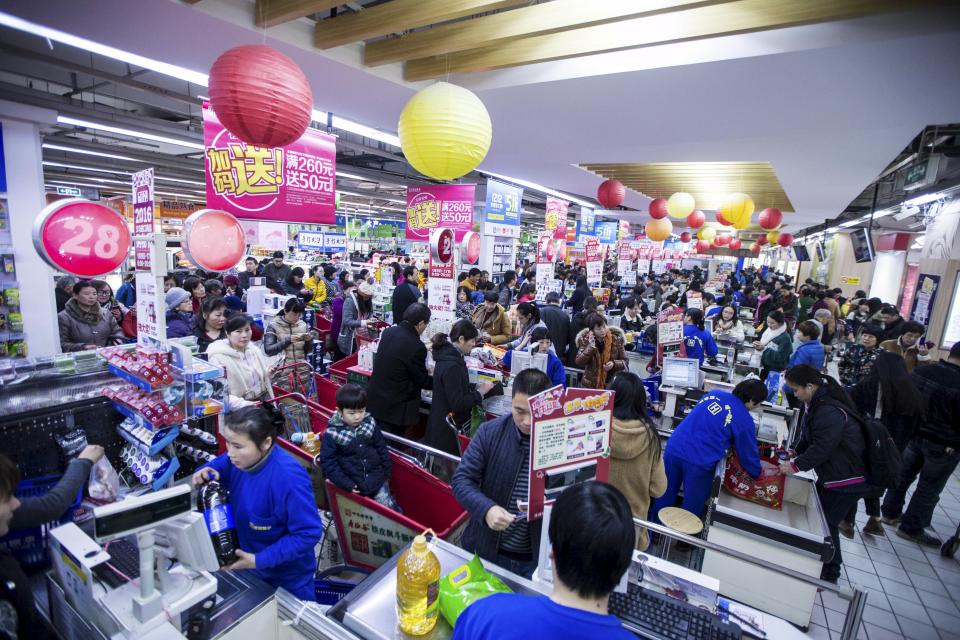The Alibaba-Marriott deal reminds us how advanced China is with money
When 23-year-old Jing Lu first moved to New York from Shanghai last year, she had to remind herself to carry a credit card, since she could no longer pay using her smartphone like she did in China.
Lu is one of the 450 million users of Alipay, an online payment service owned by Alibaba (BABA). The Chinese e-commerce giant announced a partnership with Marriott (MAR) on Monday, and selected Marriott hotels around the world will accept Alipay as a payment method.
“We want to make this a seamless, easy experience…a big part of that is allowing the Chinese consumer to pay the way they want to pay,” Marriott Global Chief Commercial Officer Stephanie Linnartz told Yahoo Finance.
A growing number of Chinese consumers are foregoing cash and credit cards to pay for all sorts of goods like groceries, restaurants, subway cards and electricity bills. Last year, a survey of 1,000 Chinese urban consumers conducted by FT Confidential Research showed that 79.5% respondents use Alipay most frequently, while only 45.5% choose credit cards and 79% use cash.
The reason is simple — who needs an extra card if a single click on your phone can do it all?
Pay with a click online or offline

Alipay was first launched as an online payment platform in 2014. Like Paypal, it mainly served transactions on Alibaba’s flagship marketplace, Taobao. As everything goes mobile, people use Alipay app to send money to friends, in a way similar to how people use Venmo in the US.
Later, Alipay expanded to the physical world as it partnered with local stores. Users can make payments by scanning merchants’ QR codes in the app, and the transaction is done within seconds. (Venmo, on the other hand, can only be used to pay for apps and with select online merchants.)
This month, Alipay also launched Cashless Week, a series of promotions to encourage a “cashless society.” More than 10 million merchants are reported to have joined the promotion. Alipay also aims to have 1 million partner merchants outside China by 2019.
Now the largest online payment gateway in China with over 450 million users, Alipay can also be used like a credit card. It issues credit scores based on purchase records, which may be more than the Chinese central bank collects. The app can grant credits of up to 50,000 RMB ($7,400) as well as serve as an investment account; in fact, Alipay has become the world’s largest money market fund.
In short, Alipay functions like PayPal, Venmo and credit cards combined. And it offers a ton of promotions for consumers — since WeChat, China’s dominant messaging app, rolled out its own mobile payment service, the two burned millions on coupons and discounts to capture the market share. Consumers once enjoyed 10% off in Walmart (WMT) when they used Alipay, and 7-Eleven gave 10 RMB off to all WeChat users.
China’s heading to a cashless and cardless society

“In a nation where cash historically dominates, it appears that Chinese consumers, especially those living in first-tier cities, are moving from cash to digital wallets on their smartphones, largely bypassing payment cards,” DBS Bank’s Sachin Mittal and E&Y’s James Lloyd wrote in a report.
Massive smartphone users and low penetration of credit cards make China a preferable environment for mobile payments. China has never become a credit card society like the US. According to People’s Bank of China, the country had only 0.29 cards per capita by 2015, down from 0.34 a year ago, which is only one-tenth of the number in the US.
Mobile payment apps also help reduce the use of cash. The percentage of cash transactions in China’s retail consumption dropped from 61% in 2010 to an estimated 37% in 2016, according to financial research firm Kapronasia. In the US, the number of cash transactions dropped to 32% in 2015.
But just like how US banks go after Venmo, Alipay and WeChat Pay also face competition from traditional banks. Rather than absorbing the transaction costs, Alipay started charging 0.1% fees last year for transferring over RMB 20,000 (US$3,000) to bank accounts since last October.
For her part, Jing Lu still misses the convenience of paying everything by phone. She uses a US bank app to send money to friends, and Venmo doesn’t seem quite as useful to her as Alipay. “I can’t use it when I shop in stores anyway,” she says.
Krystal Hu covers e-commerce for Yahoo Finance. Follow her on Twitter
Read more:
Alibaba wants to be more than the Amazon of China – Yahoo Finance
Think you’re buying on Amazon? It’s actually from Alibaba
How Amazon is eclipsing Walmart’s best efforts to dominate e-commerce

